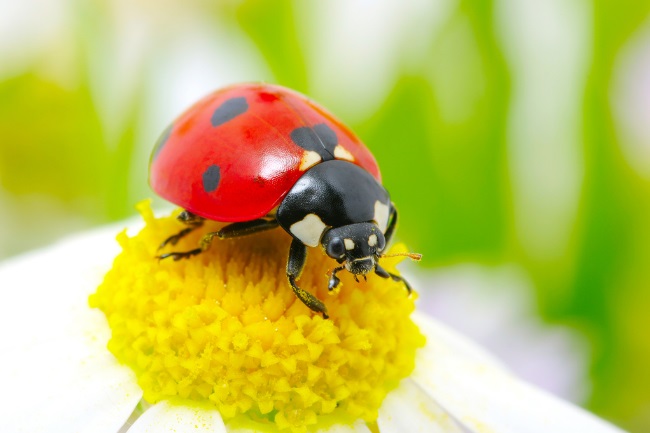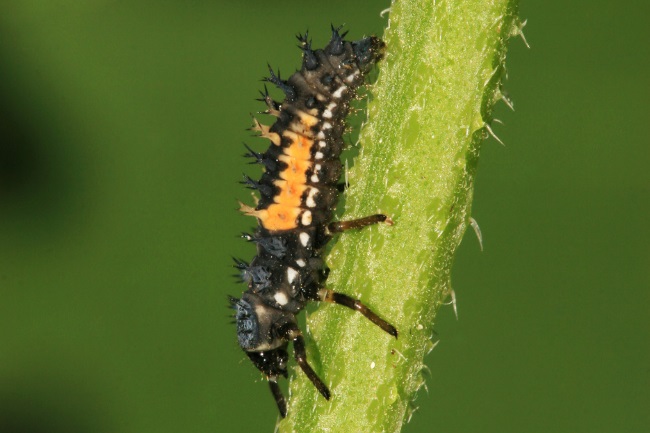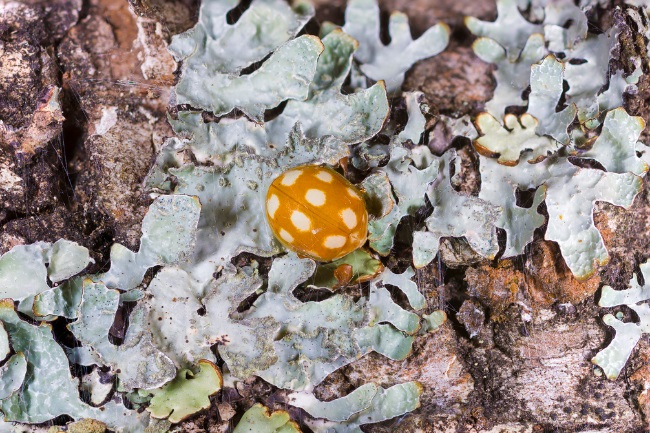Ladybugs carry toxins that are unpleasant or poisonous to animals that try to eat them, such as birds and amphibians. These toxins aren’t powerful enough to affect humans unless hundreds of ladybugs are consumed.
Contents
Why is ladybug poisonous?
When we discuss how poisonous different species of animals are, the mistake is often to think of a poison that can be passed on to another living being through a sting or bite. However, in the case of the ladybug, their poison is entirely self-contained and can only take effect if they are eaten. You might ask what’s the point in being poisonous if you’ve already been eaten; however, ladybugs practice something known as aposematism.
This is where bright colours or distinctive patterning tell a predator that the prey isn’t worth bothering with. This could be because there might be a horrible smell or chemical released, such as with a skunk. Or that they have venom, like with the coral snake. With some species, it may be that eating them will leave a bad taste in the mouth or cause the ingestion of toxins. Poison dart frogs are a famous example of this, with many of these amphibians being brightly coloured and highly poisonous.

Therefore, for the ladybug, it’s bright colours warn any predators that it harbours a nasty substance, that will either make them ill or will taste too disgusting to be worth their time. The downside is that for most predators to really get to grips with this, they will have to eat a couple first. Once the first few are spat back out, the rest of the ladybugs who come wandering by will be left in peace. Sadly this does mean that for a percentage of ladybugs, aposematism really isn’t all that great.
How poisonous are ladybugs?
Firstly, it’s important to note that the poisons that ladybugs contain aren’t strong enough to affect humans. In order to be poisoned by eating ladybugs, you would have to consume over a hundred. However, dogs and other pets can feel some effects if guzzling down these little insects, and therefore should be taken to the vet is acting unusually after consuming one. Some people are also allergic to ladybugs and may experience an unpleasant reaction if they come into contact with fluids from these insects.

A ladybug’s toxicity is highly variable. Firstly it’s thought that the diet of the larvae can affect how poisonous an adult ladybug is. This is because producing toxins is a very energy-consuming task, and therefore a stronger, healthier ladybug will be able to produce more. Brighter colours are also thought to indicate higher levels of toxins, probably again because a stronger ladybug can use more energy, making itself nice and bright, and therefore also has the energy to produce more toxins.
| Ladybug Species | Toxin(s) | Aposematism |
|---|---|---|
| Halyzia sedecimguttata | Alkaloids, including halyziapyrones | Bright red coloration with black spots |
| Brumoides suturalis | Alkaloids, including brumosal | Red coloration with black spots and markings |
| Exochomus quadripustulatus | Alkaloids, including exochomine | Bright red coloration with four black spots |
| Chilocorus kuwanae | Kuwanolides, chilocorine | Black coloration with red or yellow spots |
| Ladybug Species | Mimicking Poisonous Species | Batesian Mimicry |
|---|---|---|
| Harmonia axyridis | Halyzia sedecimguttata (Poisonous Ladybug) | Similar bright red coloration and black spots |
| Hippodamia convergens | Brumoides suturalis (Poisonous Ladybug) | Red coloration with black spots and markings |
| Coccinella septempunctata | Chilocorus kuwanae (Poisonous Ladybug) | Black coloration with red or yellow spots |
Finally, different species are thought to have different levels of toxins within them. This is probably because some have found it more useful than others to use this tactic. If a ladybug lives in an environment where there are large numbers of predators and it is easily spotted, then toxins will have a huge payback. Whereas if the ladybug can spend its time somewhere quiet and out of the way, it might not be worth it.
Also read:
What Does a Ladybug Bite Look Like? (Treatment)
Exploring Ladybugs Without Spots (Different Species)
What species are poisonous?
Most ladybug species are thought to carry some kind of toxin within them; however, some studies have shown that this varies greatly. For example, the larch ladybug (Aphidecta obliterata) has been found to have relatively low levels of toxicity compared to other species. This is probably because this species is better able to camouflage, with its brown elytra and lack of spots.
Red and orange ladybug species, such as the two-spot ladybug (Adalia bipunctata) and the orange ladybug (Halyzia sedecimguttata), have been found to have high levels of toxins. These brighter, more eye-catching ladybugs probably rely more heavily on their toxins to dissuade potential predators from gobbling down all their friends and relatives.

Fake it till you make it
Many species of ladybugs have evolved bright colourings, suggesting they are highly toxic, such as the variegated lady beetle (Hippodamia varigata) and the transverse ladybug (Coccinella transversalis). However, sometimes animal species have been known to take advantage of a predators association of certain colours and patterns with defence mechanisms like toxins.
These species will wear colours that suggest they are toxic whilst not wasting their energy on making the toxins. Predators will eat one of the poisonous species and then leave the similarly coloured or patterned species alone, for fear they will taste just as terrible. This is known as Batesian mimicry. As there is no database available as to the toxic levels of all 5,000 ladybug species, it’s possible that some of them aren’t poisonous at all and are just getting a free ride from their more hard-working relatives.

